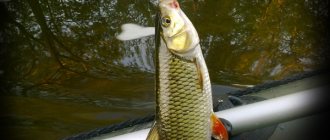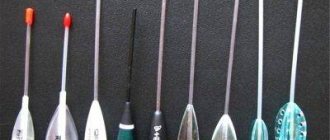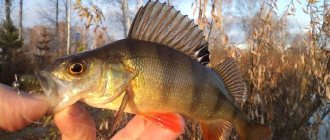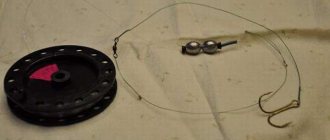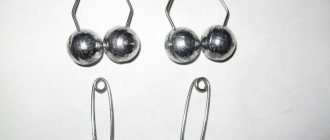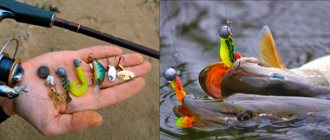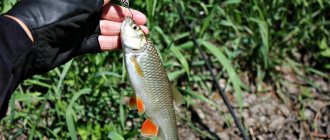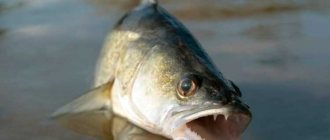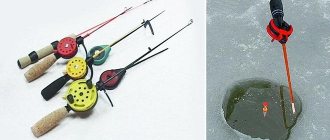How to fish with the cockchafer. The most popular fishing methods and techniques, equipment and gear. How to store cockchafers. Fishing with a frozen beetle. Spinning fishing. Fishing on top.
The well-known May beetle, also known as the beetle, is an excellent bait for catching many types of fish: asp, ide, chub, large roach, both in the classical sense of top fishing and in bottom fishing. Thus, skilled fishermen made a confident conclusion that with a donk loaded with a cockchafer, the fish are caught larger and taken much more confidently. Moreover, we are talking specifically about May gatherings, due to the restriction of one hook and encouraging active fishing, sometimes literally fishing.
Catching chub with a cockchafer
Catching chub with a cockchafer and donka is not at all limited to the season when these insects emerge. By storing them for future use, you can successfully fish from late April to late autumn. Of course, the best bite of chub, and other leucorrhoea, on Khrushchev is observed in mid-May, when the largest fish take it. The chub at this time is quite violent and easily crushes flimsy gear. There is no particular need to use sensitive alarms; it is difficult to miss a powerful bite from a bigheaded fish; it can hit so hard that the rod falls from the flyers into the water. By the way, in the spring the chub stole the fishing rods of many unlucky fishermen. So you have to keep your eyes peeled for this fast-moving fish.
The bottom rig for chub is simple
The basis is 0.2 mm braid. Sinker under 30 g, preferably sliding. A high-quality swivel to which a leash is tied from a piece (40-50 cm) of strong fishing line 0.25 mm. A single hook is better suited, the size is selected for the beetle. It is good if the hook has a short shank and the sting is slightly curved inward. Some fishermen, to give reliability, use doubles and even triples; they help out well when the big one fiddles with the bait for a long time, sucks it, sometimes even bites off some parts of the beetle’s body little by little. But personally, I think that when using a single hook, the fish is less wary, and its grip is no worse than that of doubles or treble hooks. In addition, the latter, except for the chub, are good at catching snags, algae, etc., and this is understandable, because it is impossible to hide a relatively large tee in the small body of a beetle.
I have noticed more than once that the chub often prefers to swallow the cockchafer not from the head, but from the middle, closer to the belly. Therefore, knowing this, I try to pierce the beetle in the middle of the body (between the legs) with a sharp hook and remove the sting closer to the end of the belly - idle grips almost never happen.
An important point related to fishing points: when searching for beetles, chubs often approach the very shore, and bottom gear inherently encourages casting further away.
Therefore, I try not to “toss the fish.” Often it is literally under your feet, especially near steep, steep banks with decent depth, here I cast close, the main thing is to observe silence and the rules of camouflage.
Chafer beetle and chafer larva
Perhaps one of the most undeservedly forgotten baits for catching large fish is the cockchafer. Fishermen call it gill or boar. The larva has a worm-like thick body of a yellowish-cream color and a small brown head. Read about who bites on the May beetle, and most importantly, how to collect the beetle or larvae.
What do city fishermen use today to fish with a float rod? There is no need to dig for worms or breed maggots yourself. Everything can be bought at a fishing store or from a grandfather at the market. The fishermen have forgotten how, or rather, become lazy, about “getting food” for the fish! But the chafer season has already begun and will last until the end of June. With this buzzing bait you can catch quite large fish: ide, asp, chub, catfish, and sometimes pike perch will be seduced by the tasty treat.
The easiest time to catch the cockchafer is, naturally, in May. Actually, “catch” is a strong word. Hurry up and collect. You can early in the morning (before sunrise): hit a tree trunk (maple, linden, oak) with a heavy stick - and collect the “harvest”. Add leaves from the tree they love to the container with the beetles. In the evening, we collect it like this: when it gets dark, we spread a white sheet under the trees and turn on the flashlight, and knock down the beetles that fly up with our hand or cap down. The activity, I must say, is most exciting!
If you “drag” a hefty specimen after your next fishing trip, you will undoubtedly fall in love with the cockchafer for life, which means you will want to stock up on it for a long time. You can save the “zhuzhik” until next May! The secret is simple, like everything ingenious: in the refrigerator, in a glass container, sprinkled with crushed ice. Be sure to check the jar a couple of times a month and, if you notice a spoiled beetle, throw it away. Moisture should not get into the vessel; sometimes you need to change the ice.
Fishing with frozen cockchafer
Fishing with frozen beetles is also very effective and has been practiced by domestic fishermen, probably since the advent of the first refrigerators. Freezing insects was forced by necessity, since many tried to get by with an easier approach - drying cockchafers, but fish react much worse to such bait. Most likely, dried out beetroot loses its natural smell, taste and anything else that attracts fish.
If you are not lazy, then in the spring, within one day, you can stock up on bait for almost a whole year. In the hot summer, and even better in early autumn, when the chub feast begins, a frozen beetle comes in very handy. The fish bite on it greedily, without much thought, as if in May.
How to put a cockchafer on a hook?
You can plant a beetle in one of several ways. The first option involves the following steps:
- Initially, with a needle tied to the line, you need to pierce the beetle from the butt side. The needle is removed from the opposite side (head).
- When the insect is pierced, you can insert a hook and fishing line into the body. It should be hidden there and securely fixed. This approach to hook rigging allows you to catch up to several individuals at more or less equal intervals in time.
Second option:
- The cockchafer is directly pierced into the back with a hook and removed through the head. The sting of the hook is not hidden in the body, but remains visible.
- Now that the bait is on the hook, you can catch the chub.
How to store cockchafers
The caught insects can be placed in suitable jars with a tight lid, and after warning all family members (so as not to cause unpleasant incidents), they can be placed in the freezer. Before going fishing, we simply select the required number of insects, put them in a suitable jar, where they will thaw on the way to the river. The chub bites on them just as greedily as on freshly caught ones.
If the beetles have not completely thawed out, then as soon as the insect spends a little time in the open sun or on the warm palm of a fisherman, the bait will reach the desired condition in a couple of minutes. Here, it should be noted, there is one pitfall. You should not keep frozen beetles in the open sun for too long; the bait may “go sour”; this can be easily determined by the sharp and unpleasant odor coming from the beetle. Just don’t confuse it with the natural smell of an insect, which fish is very attracted to. By the way, in a properly thawed Khrushchev, this “spirit” becomes much more vigorous than the natural one, which clearly tempts the big-headed one to grab it.
Fishing for beetles with a spinning rod
Often in the spring, many spinning anglers find themselves in an unpleasant situation when a predatory fish, for some reason known only to it, refuses to bite on artificial decoys. Then fishing ingenuity comes to the rescue. The spinning rod can be quickly converted into a donkey. To the end of the main fishing line we knit a sinker of 30-40 g; an ordinary “Cheburashka” will do for this. A little above the sinker at a distance of 15-20 cm, to the main line, from a segment of a vein 0.23-0.25 mm, we knit a leash 25-30 cm long. It is unwise to make a leash from thicker lines, since such veins will be clearly visible to large fish, especially in clear spring waters.
The chub usually grabs the cockchafer sharply, the fish catches it itself, or rips it off the hook.
A spinning rod like this is especially valuable when fishing compact, difficult areas - near snags, under flooded trees and bushes. It is good to place such gear on steep banks, where there is a fast current and sandy and pebble bottom soil, where natural bait gives an excellent chance of seeing the bite of a decent chub.
Fishing for cockchafers on top
Of course, in various regions of the country during the period of the emergence of the beetle, fishing for the cockchafer, freely swimming on top, becomes one of the most popular and productive. And it has been like this since time immemorial. And these days, beetles are successfully caught from above, using a conventional wire telescopic rod paired with a spinning rod, as well as a self-loading float of three to four grams and a leash, with the help of which the beetle is moved away from the float by 1-1.5 meters. Moreover, the beetle floats in front of the float, which is done specifically so that the alarm does not unnecessarily alert the fish.
When fishing with this method, the floating float must carry the line from the reel spool with it impeccably smoothly, there should be no jerks, since unnatural jerks are transmitted to the bait floating on top and this alerts the chub, and even more so a large suspicious ide. To make the line come off the spool smoothly, you can use your hand. This technique allows you to create a small line arc on the water or a free sag of the line below the spinning rod, which allows you to absorb an unexpectedly sharp blow from the fish.
As a rule, a bite looks like this: a funnel forms next to the float (which is not always noticeable at a decent distance), then a splash follows, and the float instantly disappears under the water or goes to the side - the moment to hook. In addition to the chub, the cockchafer and asp also attack.
Some fishermen argue that the beetle should swim naturally on the surface of the water, and its rafting speed should not be less than the speed of the current itself. But another part of the fishermen assures that it is the small turbulences of water that form around the beetle during moments of man-made braking that even better provoke the fish to bite. Fishermen have different opinions, you need to try both.
You can fish for the cockchafer not only in the classic places under overhanging trees and bushes; fishing can also be very effective near the extensive riffles on the adjacent stretches; fishing on sand spits that deeply dissect the river bed is especially successful.
Catfish bait
People often make simple things complicated.
Fishermen are no exception. This human penchant for the mysterious has a direct bearing on catfishing. Imagine a section of a river that probably has catfish and several fishermen fishing for catfish and quok. Simultaneously. They have the same skill in the ability to create pressure in water (let there be sounds), the same boats, motors, and gear. Let’s make a small allowance for the occasion and omit some of the tricks of “group” catfishing, which belong in the topic “How to catch catfish with a kwok”, but not here. Some fishermen have pearl barley shells on their hooks, others have mole crickets with green (meadow) worms. Which of these fishermen has the best chance of catching catfish? Fishing occurs at the end of June on the Lower Don. Usually, at this time, anglers are pleased with several days of fighting, when the catfish willingly breaks away from the bottom upon hearing the sound of a quok. The local author knows the answer and wants you to understand simple things.
I don’t have time or much interest in surfing the Internet and reading up bits of fishing wisdom. Moreover, most fishing websites are full of meaningless or outright stolen information. This is sad.
There are rare attacks of curiosity. Below is the result of a short run through articles about catfishing. The conclusion from this is simple - you need to create thoughts in your head, not rely on a kind uncle who thinks for us (you).
The green letters are not hallucinations, these are comments from the site’s author.
- ...catfish is a carnivorous fish.
it eats literally every living thing... a worm, a crayfish, a rat, a bird... I have an elderly fisherman I know who claims that he personally saw a catfish drag a cow under the water at a watering hole. As soon as he drinks a glass of moonshine, he remembers it. (Tolik, cows and catfish eating girls:Link) - ...in a reservoir, a catfish can most often meet a worm...
In what place in a reservoir does a catfish meet worms? Crawls ashore with a shovel? There are indeed worms at the bottom of reservoirs, which are excellent bait, but I would not argue that worms are the main food of catfish. Maybe you need to literally understand what is written and the catfish MEETS worms? Worms are not the main food item for catfish. - ...the lack of easily accessible food in the reservoir FORCES the catfish to eat fish...
How to understand this phrase? I wonder what copywriter wrote such nonsense and why the site owner posted this verbal garbage on his site? What foods are “readily accessible”? Does the catfish collect pearl barley from the bottom? Both crayfish and fish can develop great speed when running away from a predator. Crayfish and fish are the main food of the catfish and it can make lightning-fast throws while hunting. I cut up a lot of catfish and ALWAYS have gobies and crayfish in their stomachs, occasionally I come across other fish and I have NEVER come across “readily accessible” pearl barley shells. In the stomachs of catfish, the shell of dreisena is often found, apparently swallowed during the hunt for gobies and crayfish. It is clear that the diet of catfish depends on the reservoir and somewhere there may be a lot of frogs and little fish and crayfish. - I even had to watch how 3-4-meter catfish were eaten by mayflies, accumulating fur coats on the virs.
I don’t know what vir is, but there is nothing surprising in catfish eating mayflies. - Catfish feed mainly on fish, as well as crayfish, where they are found, shells, and worms.
But most of all he loves frogs. The catfish crawls out of the hole, sneaks towards the thickets, from where the frog makes its voice, and rushes at it like lightning. Some kind of plot for a horror movie. I’m trying to imagine “a catfish sneaking through the thickets.” It’s interesting to know how catfish “crawl out of holes.” If a catfish can THROW LIGHTNING on frogs, then why does it have difficulty hunting fish and crayfish? What is true is that FISH and CRASH are the MAIN food for catfish. Naturally, you need to make allowances for the reservoir, somewhere the catfish is forced to choke on frogs
Mole cricket for catfish
-Have you stuffed the dogs? - Yes, I filled a little, about 50. I didn’t even fill my pencil case. Can you imagine what people think when they hear such a dialogue among fishermen?
Photo source: macroid.ru.
Photo source: macroid.ru.
MEDDVEDKA - the best bait for catfish
in summer time. You can find how to catch mole crickets on the Internet. I don’t want to fill the site with someone else’s information. I’d rather tell you and show you how to store the mole cricket and place it on hooks.
Medvedka can be salted and frozen. You need to freeze so that the bears do not touch each other. Otherwise they will stick together into an unsightly lump. Salt directly at the extraction site in a very strong salt solution poured into a plastic bottle. Keep away from the sun! It stinks VERY strongly. Somu likes this stench.
If there is a need to store mole crickets for more than two days, spacious containers with sawdust are used. The difficulty is that mole crickets are very active and eat and drink a lot of water. They kill each other with their powerful claws. They need to be fed with cucumbers, potato peelings, watermelon peels, etc. The mole crickets deftly bury their food and crunch very hard when they eat it.
Read horror stories about bears from the Internet:
- Medvedka is a terribly scary monster.
There is nothing creepy about the bear. This is a common insect. - Real somyatniks impale a mole cricket with gloves and tweezers!
Complete nonsense. Well, sometimes it stings, so what? Catch them by the backs, and when setting the hook, pinch the bear’s paws with your thumb and forefinger. - Judging by its underdeveloped wings, the mole cricket once flew.
How can they not fly? Mole crickets fly very well, so the container with them must be covered with a lid. Mole crickets fly at night and move quickly to areas convenient for them. - The mole cricket has a sting on its tail with which it stings.
Utter nonsense. It seems the bear goes to the toilet from there or not? Conduct observations and scientific experiments
How to plant a mole cricket.
How to attach a mole cricket:
- The most important and funniest thing: when collecting, storing and mounting the mole cricket, gloves and tweezers are not used. If this goes on, then you will be using tweezers to plant maggots. The mole cricket is not poisonous - it's just an insect.
- They say that mole crickets pinch. I have not experienced this, although sometimes I grab them at random, but this rarely happens. I usually take it from the back, pressing the “claws” to the body.
Naturally, the method of hooking depends on the size of the mole cricket, the size and shape of the hook, and the attachment put on the hook along with the mole cricket. Some people recommend baiting the mole cricket from the tail. In my opinion, this is incorrect if you plant one insect. The catfish sucks the back, fleshy part and does not like the head, which is understandable. Therefore, it is precisely the “ass” that needs to be slipped under his nose. He has the right to life and the opposite opinion. If you attach the mole cricket with its head to the sting of the hook, the catfish will try to reach the back of the mole cricket and will quickly swallow the tasteless, bony head. Try it, experiment yourself.
So, if one insect is hooked, the middle of the skull or “muzzle” is pierced between the small legs, the hook is passed under the skin and brought out somewhere behind. If you are hooking a pair of mole crickets, you can attach the first one from the tail, and the second one from the head - this way the fleshy “butts” will stick out from both sides of the hook.
I don’t tear off the paws and don’t tie the mole cricket by its “claws” to the hook, but I don’t see anything wrong with that. You need to navigate the situation - the strength of the current, the ground, the strength of the bite, etc.
Usually, the finch of the hook is brought out. It seems that the catfish is not very afraid of spicy food, having become accustomed to eating whole crayfish.
Of course, there is a lot of room for fantasies about “how to more effectively torture a mole cricket,” for example, you can stick it just behind the head, trying to prolong the agony of the unfortunate insect.
Separately, it is worth mentioning about planting cabbage on tees. In this case, try piercing the base of the skull from the tail side and tying it to the shank of the hook. If you leave the cabbage hanging under the hook, the catfish will tear off its fleshy “tail.” It is convenient to attach shells or worms to the tees.
Threads are used to tie mole crickets to a hook, but it is more convenient to use elastic bands. Both cut pipettes and knocked-out rings of the required sizes from baby nipples are suitable for this (suitable rubber is used there). Do what suits YOU, find what you like. By the way, it seems that suitable small rubber rings can be found in “carp” fishing stores.
Keep in mind that when fishing with donkeys, the bite may look like light touches even for “decent” catfish. Skip the “approach” and you will be left with the mole cricket skull on the hook. That is, after several pinches, a tug or loosening of the fishing line may follow, depending on the direction of movement of the catfish. At this moment you need to hook. Therefore, when I often fish with donkeys, I hold the vein in my hands so that I can feel the slightest touch of the catfish.
Although there are fishermen who advocate fishing only with shells (there is a huge laugh at this point) and even ridicule “garlands” - the latter are used by fishermen. Various kinds of caterpillars are tied above the hook. What does it look like? There will be photos here.
Catching catfish on a shell
Photo source: wikipedia.org.
Contrary to popular belief, shell is not the best bait for catfish. One cannot but agree that the shell is the most common bait and is easy to get. There are more shells, there are fewer shells, but they literally lie under your feet.
There is an opinion that the shell is a common dish for catfish. Numerous autopsies show that the stomachs of catfish always contain crayfish and fish. Mostly bulls. The shells are caught by chance and this is... a small dracena, apparently captured by the catfish by chance along with the gobies. I wonder what is most in the stomachs of catfish in the Lower Volga and other reservoirs?
For “thinking”: For you personally, what is your usual and daily food? Maybe quite boring. So the catfish prefers something tasty that rarely gets into the water. Especially during periods of passivity.
It is convenient to place the shell on tees and double hooks on a short homemade leash or tied in a row on a braided line, for those who fish with rods and reels. It is necessary to plant the pearl barley loosely, so that all the insides “float” in the water. To do this, it is necessary to remove from the shell everything that is inside, and not just the hard part of the shell.
Rhinoceros beetle larva
Photo source: macroid.ru.
Photo source: macroid.ru.
Do you call garden strawberries strawberries and any four-wheel drive vehicle a jeep? Strawberries reproduce with tendrils and spread along the ground; strawberries can be up to half a meter in height and are propagated by dividing the bushes. These are different plants! You have never seen strawberries, you will not see them, you will not taste them. Jeep (JEEP) is a brand of car manufactured in the USA, and any other four-wheel drive vehicles have nothing to do with a real jeep. So it is with the cockchafer and its larva. Fishermen and gardeners stubbornly call the May beetle the bronze beetle.
This is not a cockchafer. This is a golden bronze:
Golden bronze larva:
The green beetle called MAY is actually called GOLDEN BRONZE. The real CATH BUGLE is brown in color and very inconspicuous in appearance. I have known this since early childhood, as I am associated with gardens and vegetable gardens.
To catch catfish, the larvae of the RHINO BEETLE are used, which are huge in size - up to ten centimeters in length. The larvae of the golden bronze beetle, mistakenly called the cockchafer, are smaller in size, but outwardly similar to the larvae of the rhinoceros beetle. Apparently, because of this similarity, confusion arose.
Rhinoceros beetle:
Rhinoceros beetle larva:
++++++++++++++++++++++++++++++++++++++++++++++
Chafer.
This is what a cockchafer looks like:
Photo source: macroid.ru.
This May beetle is so cute in a professional photograph, in ordinary life, while digging up a garden or when getting bait for fishing, it is completely inconspicuous and invisible against the background of the ground.
This is the larva of the cockchafer:
Photo source: macroid.ru.
Golden bronze.
This is what golden bronze looks like:
Photo source: macroid.ru.
Golden bronze larva:
Photo source: macroid.ru.
Fishermen of the Lower Don call the rhinoceros beetle larva GRABAC. In Ukraine, on the Volga, it seems, they call it an oil seal. I can not say exactly.
I have been digging hornbeetles for many years and always find dead or half-dead rhinoceros beetles near clusters of their larvae. What is natural - where should parents be, if not close to their children? Only once I came across a large accumulation of golden bronze larvae, which for some reason is called the May beetle. I came across the nest completely by accident - I was disappointed to find a grabber around the old silage pit and just walked along the grass and poked it with a pitchfork wherever necessary. That’s how I ended up on a large accumulation of bronze fly larvae. Why did I decide that these were larvae of the bronze beetle, and not a rhinoceros beetle or another beetle of the same family? It’s very simple - along with the larvae there were also their parents. There were a lot of dead beetles and a lot of larvae, but most of them were no more than two centimeters long and were not suitable as bait for catching catfish. I collected a few of the larger larvae and covered the rest with earth.
Why are beetles always half-dead or half-dead? The fact is that the life of rhinoceros beetles is very short - only a few days during which the beetles must find both a mate and a suitable place to procreate. Unlike their parents, the larvae live for several years until they turn into beetles.
The rhinoceros beetle larva is placed on the hook by piercing it under the head or tied above the hook. It is better to tie above the hook, since catfish that are pinned under the head are often torn off. The larvae are stored in spacious containers in old manure, in sawdust, where you dig and collect soil. They live in captivity for a long time in a spacious container and low temperature in a cellar, for example, or in a hatch well. They don’t like a lot of dampness, so you have to be careful with water, but sawdust and shavings are very welcome. I once found a lot of large rhinoceros beetle larvae in the waste of a furniture factory and spent several seasons collecting as many of them as I wanted. Take a closer look at the elevators. They settle in seeds.
The larva of a rhinoceros beetle (“grabak”) is the best bait for catfish, next (and together) to the mole cricket. The bark beetle, as we have already learned, is more of an addition to the main bait than an independent bait.
Video about rhinoceros beetle larvae that were sitting in a compost heap and waiting for me to get them out of there so that I could go catch catfish with a quok.
